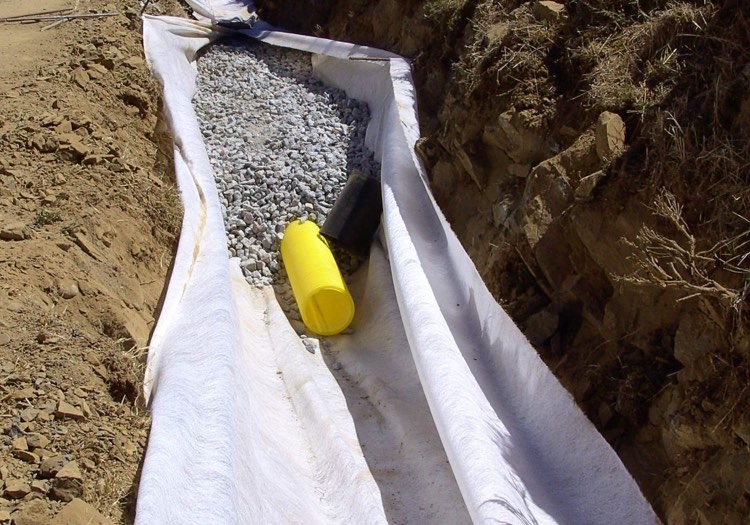AUSTIN/BRUSSELS – The International Geosynthetics Society (IGS) is calling on the European Commission (EC) to fully understand the enormous sustainability benefits of geosynthetics when considering how to reduce microplastics in the environment.
How responsible geosynthetics are for the release of microplastics is a question the EC is currently seeking to answer, in an impact assessment study that could have major implications for the sector in coming years.
“There has been a lot of progress in working towards a circular economy, but certainly we need to do more,” said Werner Bosman, circular economy policy officer for the European Commission’s Environment Directorate, speaking during a panel discussion at the Nonwovens Get-together held in Brussels on April 28th by EDANA (the European Disposables and Nonwovens Association). “The objectives are now spelled out in the European Green Deal – climate neutral, resource efficient and circular, by keeping materials in the loop as long as possible. We believe this is good both for business and the environment, but there is still a need for pollution control and the release of microplastics is one issue we are investigating.
“I think it’s quite obvious that if you put huge quantities of plastic-based products into the environment in sometimes very harsh conditions, the erosion and abrasion they’re subjected to will lead to microplastics release. The question is, if geosynthetics are responsible for microplastics release, what can we do about it? Are there alternatives, and are the alternatives good enough? We are currently working to come up with solutions.”
Response
On May 17th, the IGS submitted its response, calling on the EC to ensure that this important issue is addressed using the best available scientific data and case studies.
It is also calling on the EC to fully consider the entire lifecycle benefits of all products that use synthetic materials in their manufacture.
It is inappropriate to compare single-use consumer plastics, which decompose rapidly and are often disposed of irresponsibly, the IGS says, with high-quality durable engineering products that deliver long-lasting benefits to entire communities. Geosynthetics present a negligible environmental risk, and where risk exists at all, it is a rare occurrence within the highly regulated disciplines of civil and environmental engineering. Potential examples such as the use of incorrectly specified products or misguided installation and maintenance practices are addressed through high technical and professional standards in the industry.
“The IGS welcomes the European Commission’s consultation,” said IGS vice president Nathalie Touze. “It is an important opportunity to clarify the main sources of microplastics. Using science-based evidence, we look forward to working with the Commission to identify effective measures to reduce microplastics leakage into the environment.”
Benefits
“Geosynthetics deliver enormous benefits,” added Preston Kendall, co-chair of the IGS Sustainability Committee, “They reduce freshwater losses from irrigation canals in water-stressed regions and play a critical role in water and wastewater treatment plants. Compared to other construction materials, their carbon footprint is typically 65% lower. They protect lives and livelihoods by reinforcing slopes and underpinning vital infrastructure. Geosynthetics offer a durable, reliable and resource-light means to protect vulnerable coastal zones from erosion. They also help to contain millions of tons of plastics stored in landfill every year.”
According to Francesco Fontana, chair of the IGS Corporate Committee, independent data shows that most plastic waste entering the environment is a result of poor waste management. The EC’s own figures estimate that vehicle tyres and road markings (55%), pellets (28%) and clothing textiles (8%) account for the majority of microplastics in marine environments. Single use consumer plastics such as carrier bags and plastic bottles also contribute.
“In contrast to many consumer plastics, geosynthetics do not normally degrade and can be fully recovered and recycled at end of life,” Fontana said.
